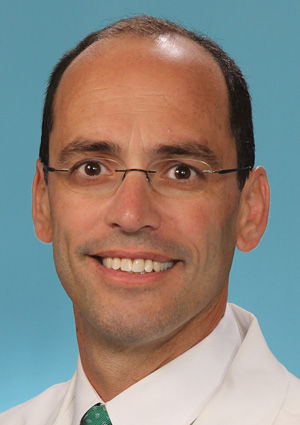Busy surgeon gives folks a helping hand
Published March 15, 2017
A man of many titles, Dr. Charles A. Goldfarb specializes in hand and wrist surgery, striving for “functional and aesthetic outcomes” in patients with injured arms, wrists and hands.
“We don’t always appreciate our bodies until we lose the capacity to move due to an injury or problem, and then we realize the importance of proper function,” Goldfarb said. “I try to restore that.”
In addition to his duties as chief of pediatric orthopedic surgery, Goldfarb, 46, also is a professor, a researcher, the vice chairman of pediatric and adolescent musculoskeletal diseases in the orthopedic surgery department, and co-chief of the Hand and Wrist Service at Washington University’s School of Medicine.
In his work, Goldfarb sometimes relies on time-tested procedures; and sometimes, his work includes the latest technology, such as using prostheses crafted by 3-D printers.
Goldfarb made time recently to talk about his work.
Please talk a bit about the different aspects of your wide-ranging practice.
There are three parts to my practice. One is taking care of kids with traumatic injuries of all kinds, and kids born with upper extremity birth differences, which includes extra or missing fingers. That’s where my research lies as well.
And the second area?
I treat athletes at all different levels, including high school, college and professional. I’ve worked with members of the Cardinals and Blues as well as athletes from outside the St. Louis area.
And the third?
I see patients with fractures of the hand and upper extremities, and patients with carpal tunnel, tendonitis or pinched nerves — really everything that is part of every hand service practice. It’s unusual to see patients in all three areas, but I have a lively practice across the whole age spectrum.
What drew you to this specialty?
My father was a head and neck surgeon. Initially, that drew me, and then I learned about hand surgery.
What interested you about it?
A combination of things, including the anatomy, the ability to take a problem that’s interfering with a patient’s quality of life and help them, and then to see real benefits in a short period of time. I like that. One of my favorite comments from a patient was this: “You’ve got to help me — I use my hands a lot.” Our hands are incredibly important.
You say you’ve always been interested in working with children. Talk a bit about that.
I write a blog about kids’ hand differences — it’s at congenitalhand.wustl.edu — as a way to educate people about abnormalities of the hand and wrist that children may experience. I enjoy writing it and, through that, I’ve become fascinated with 3-D printing and prosthetics.
My understanding is that 3-D printers operate much the same as ink printers, but they print layers of heated plastic that are then used to make prostheses. Will this someday be the norm?
I’d say 3-D printing is starting to change things, but I wouldn’t say we are there yet. We are hoping to make prostheses that are lightweight, easy to wear and easy to replace as the child grows. Another attraction is a low price point, and the kids like that they can get a brightly colored prosthetic.
What other changes are occurring in the field?
Hand surgery is evolving as we are starting to understand more of the molecular level abnormalities in arthritis. We offer outpatient surgery, which pleases patients. Also, now we do bigger surgery through smaller incisions, which means faster recovery. The hardware is better, too. Plates and screws have come a long way.
You grew up in Alabama in a Reform family, and you are a member at Central Reform Congregation. How have Jewish values influenced you?
I was highly influenced by the Jewish religion, and I live by Jewish values. My goal is to help others when I am able to do so.
Send your suggestions for HealthWatch to [email protected]. We focus on health care professionals, researchers, fitness instructors, dietitians, physical therapists, and people meeting ambitious health and fitness goals.
















